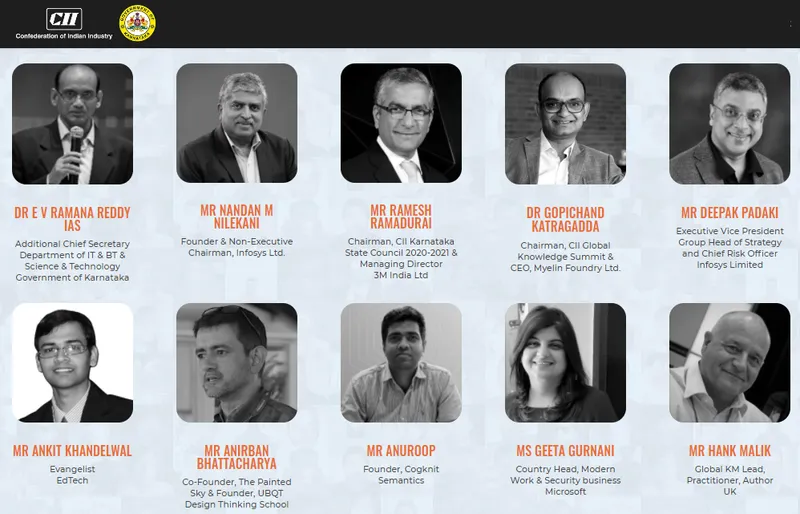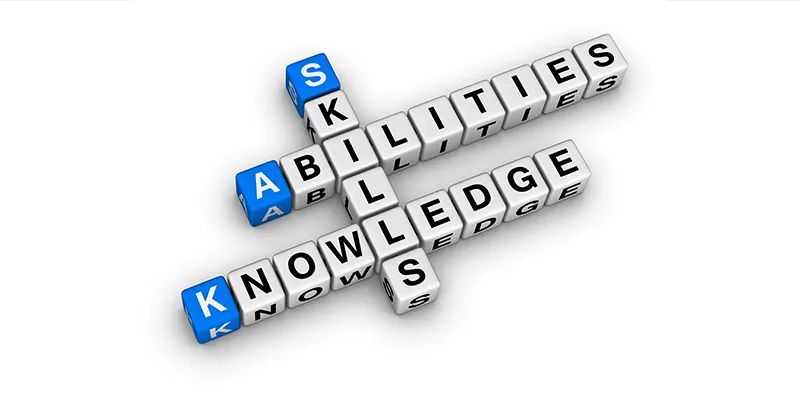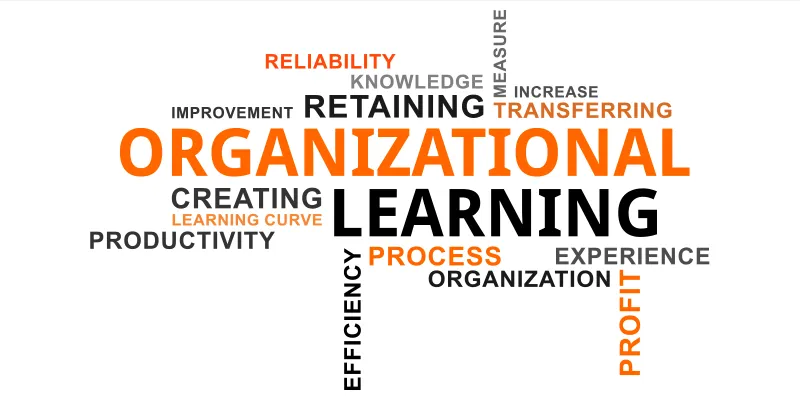From implementation to impact: author Hank Malik on the benefits of knowledge management and digital transformation
In this speaker interview from CII’s Global Summit, we explore new frontiers in the knowledge economy.
Hank Malik is the co-author (with Jordan Richards) of the publication, Knowledge Management: A primer and catalyst to support Digital Transformation (see my review here). He has also contributed to the KM Cookbook (2019) and Knowledge Manager`s Handbook (2019 edition).
Hank is the Knowledge Management and Digital Transformation Associate and Consulting Specialist at Acies Innovations. He led Petroleum Development Oman’s successful submission for the MIKE award at both the MENA and global levels.
With 20 years of experience, he has implemented multiple KM and transformation projects in the Middle East, Europe, US, and Asia, in the energy, engineering, and government sectors.
Hank is a speaker at CII’s annual Global Knowledge Summit being held online on April 8-9 this week. The theme of the 16th summit is Transforming Knowledge Management for Hybrid Learning and Hybrid Workplaces.
As media partner for the Knowledge Summits, see YourStory’s coverage of the editions from 2021, 2020, and 2019, and sessions takeaways from the Bangalore K-Community meetups.
Hank joins us in this chat on the synergy between knowledge management (KM) and digital transformation (DT), emerging trends and skillsets, and tips for business leaders.
Edited excerpts from the interview:
YourStory [YS]: In the time since your book was published, what are some notable new examples of KM or digital transformation you have come across?
Hank Malik [HM]: I have seen a huge wave of interest in digital transformation and can’t seem to open a blog or article without reading something on DT. A particular push seems to be coming from the opportunities for enhanced digital and information management, customer service experiences, and HR.
In the oil and gas sector, there is a particular push for KM and DT in areas such as robotics, AR, and VR with a real interest in the promise of smart digital oil fields. Progress in areas such as virtual or digital consultancy is also growing with the push to work from home and virtual collaboration.

YS: How was your book received? What were some of the responses and reactions you got?
HM: The replies to date have been very positive, and I have had compliments on the clear messages that were communicated, and the promise of digital transformation brings real enhanced benefits to KM.
The book is also a good primer for those that either want an introduction to KM or have a quick refresher on the fundamentals, including the key principles. Other feedback was they liked the non-academic tone and colourful graphics.
YS: What is your current field of research and consulting in KM?
HM: At present, I am focussing on the innovation and promise of digital communities enlightened with new smarter tools and new user experience and engagements. Linked with the above ease of use of KM, digital tools are critical for communication and smart working.
I am targeting the energy sector and the benefits that KM and DT can bring. Besides, I am reviewing the current status of KM certification, ISO 30401 KM Systems accreditation, and current KM bench-marking.
YS: How has the COVID-19 pandemic affected the findings of your book concerning the importance of KM and digital transformation?
HM: More than ever, I see the key building blocks of KM offering a solid foundation to support better remote and collaborative working, and linked to DT, can help to make sense of the current digital chaos end users are facing.
KM, delivering the best practices, is key, with a focus on smarter digital management, people, process and content management integration. The need to show real business benefits is also key, and the ability to connect faster to the right expertise and know-how more important than ever.
For employees, the IT security demand by companies is leading to increased frustration and challenges with smarter working across multiple tools and an overall sense of digital fatigue.
YS: Most case studies of KM feature big companies. What are your findings concerning KM in government or civil society?
HM: I wrote a whole chapter on KM in the public sector for the Palgrave Handbook of KM. I see that KM has lost several opportunities to lead a transformational government, and I see DT offering a new promise to kick start. Transparent knowledge sharing internally and cross-government is still a major challenge together, with the use of cross-government tools and the security issues this brings.
However, in Dubai, the government is doing some incredible things under the banner of KM and innovation, and they are now gaining global recognition for their achievements.

YS: What are the typical challenges KM practitioners face as they scale up their KM initiatives to full roll-out? How can one overcome these challenges?
HM: One challenge is securing the right amount of resources. Now, more than ever, a real demonstration of benefits is needed for KM and showing real believable evidence is key.
Having support from respected finance and LEAN performance analytics experts is important in giving KM a respectful platform. The HR department should also support KM far more and include them in succession planning and talent management. KM needs a supportive home and should not be seen as a standalone service.
YS: What is the impact of ISO standard on KM implementations? Is it finding widespread acceptance?
HM: It is early days for the ISO standard, although I am detecting more interest, particularly in the Middle East. However, recent surveys point out the current climate is not seen as a high priority.
Besides, there are now multiple new standards recently introduced, including collaboration, innovation, and human capital management, which is causing some confusion with KM, and the most appropriate choice of standards to adopt. There should be better communication and direction led by ISO and the KM industry, which I do not see at the moment.
YS: How would frameworks of organisational learning, LEAN, and Six Sigma interact with KM?
HM: I see a major opportunity for KM to better integrate with LEAN in particular. The final outputs are pretty much the same, aiming towards the continuous improvement, with KM focussing on the people, processes, content, and learning components
LEAN needs to understand and support KM better. In Petroleum Development Oman, they had very successful LEAN operations and gave invaluable steerage on the usage of reporting and key metrics to adopt for both presenting and reporting to management. This included performance dashboard, KPIs, Gemba walks, and so on.
YS: Much of KM focuses on best practices. How can companies create a culture where stories of failure and mistakes are also shared?
HM: It has to be engrained from the top to the bottom, and there has to be a no-blame culture in place, particularly difficult in some cultures.
Having corporate lessons learned knowledge base fully adopted is also key, with transparency included. Again, large oil and gas organisations have had particular success with this and claimed to have saved millions of dollars in cost savings and cost avoidance. I have particular expertise in this area.
Project managers are key to building this required culture and capturing the truthful and fair learnings in closeout reports and reviews presented to management.

YS: What are the Top Three success factors for government, academia, and industry to work together and grow KM in their countries?
HM:
1. The government must lead with the national objectives and directives and with strong leadership in place, supporting KM
2. The academia must work more collaboratively and be willing to share more openly and not be competitive. They must supply quality services and knowledge that can be applied in the industry
3. The industry must be easier to work with and show a willingness to embrace wider knowledge and expertise across multiple domains
YS: Much of KM tends to focus on best practices and risk management. How can KM work better with the innovation function in a company?
HM: KM needs to sell and brand itself better and offer the full range of services to help encourage innovation and breakthroughs.
Increasingly, I am seeing KM adding value in R&D, innovation, and collaboration and with the supporting processes, helping to catalyse breakthrough new industries and services. The help of collaborative, virtual communities in the cloud can greatly help here.
YS: After all these years, what misconceptions about KM do you still come across in the industry? How can these myths be overcome?
HM: One common misperception is that KM is an IT thing. Just look at most of the KM jobs advertised today.
KM is still seen as a document or information management service and can now look a bit tired and old fashioned. I agree it needs to rebrand and reinvent itself quite quickly and embrace digitalisation and business transformation.
YS: What trends do you see emerging in the field of KM?
HM: I would say digital transformation, virtual KM, digital communities, cognitive discovery and search (smart KM), collaboration, and mobile KM.
I see KM moving away from its traditional home and becoming more aligned to LEAN, performance improvement, and digital transformation.

YS: What is your next book going to be about?
HM: KM and digital transformation — bridging the gap. Or something similar.
YS: What is your parting message to our audience on how to succeed in their KM journeys?
HM: Be committed to the cause, and always have passion and tenacity in big amounts. But don’t sound too evangelical and always believable in your statements and promotion of KM.
Stay grounded, and always provide real evidence-based outputs. Knowledge managers need to be re-skilled in the new economy. Skill areas include digital transformation, data science, collaborative Enterprise Social Network (ESN) tools, SNA, knowledge graphs, business analytics/intelligence, and dashboards.
KM is still very much alive; it just needs a major rebrand!
Edited by Suman Singh




![[Year in Review 2020] ‘Failure is a friend, philosopher and guide’ – 50 inspiring quotes on recovering from failure](https://images.yourstory.com/cs/2/28b451402d6a11e9aa979329348d4c3e/Failure3-1608901438313.jpg?fm=png&auto=format&h=100&w=100&crop=entropy&fit=crop)





